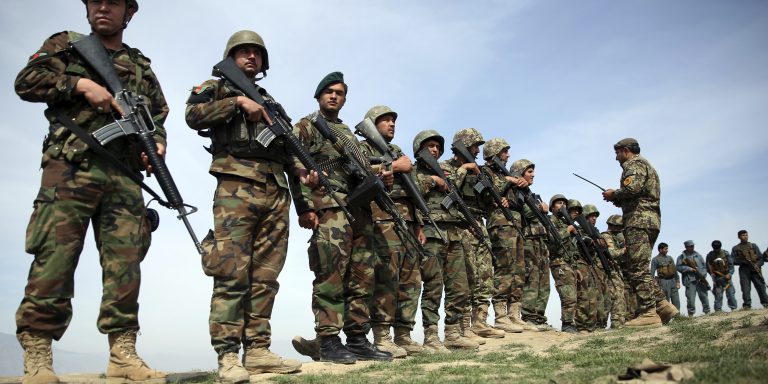INTELBRIEF
April 27, 2018
IntelBrief: Fighting Season in Afghanistan

- On April 25, the Taliban announced the start of another fighting season in Afghanistan.
- The Taliban rejected the latest offer by the Afghan government to enter into peace talks and said it will focus on attacking U.S. personnel.
- The term ‘fighting season’ does not truly apply to Afghanistan anymore; the fighting never stops.
- The U.S. presence seems indefinitely guaranteed in Afghanistan, with officials repeating the same talking points about the need for patience for years.
.
The Taliban announced the start of another ‘fighting season’ in Afghanistan.This year’s campaign is called ‘al Khandaq’ after a famous battle to defend Medina in the earliest days of Islam. The symbolism of the ‘Battle of the Trench’ is intentional, with the Taliban portraying themselves as the vastly outnumbered defenders of the faith, using topography and cunning to outlast their allegedly superior opponent. The rejection of peace talks with the Afghan government was expected; the Taliban are in a strong position militarily, with an influential presence in more areas of the country than at any time since 2001.
On April 25, the Taliban stated that the Afghan force, labeled as ‘internal supporters’ of the U.S., would be a secondary target. The ‘primary target’ will be the American invaders and their intelligence agents. This was also expected, given the high-profile increase in U.S. troop levels in the last year. While the increase will be nowhere near the 2009-2011 ‘surge’ level, which at its peak was over 100,000, it will still be a significant increase. In 2016, the U.S. capped troop levels in Afghanistan at 8,400; likely that number is more than 14,000 now, and counting.
The cycle of conflict in Afghanistan appears endless. U.S. Marines are fighting to reclaim territory in Helmand Province that they fought to reclaim in 2009. Afghan civilians are being killed and wounded at a tragically high rate. A February 2018 report by the United Nations Assistance Mission in Afghanistan announced 10,453 civilian casualties in 2017: 3,438 killed and 7,015 injured. The targeting of civilians has actually increased in the early part of 2018. Earlier this month, a suicide bomber killed at least 57 people standing in line to register to vote in Kabul. An attack in January using an explosive-filled ambulance killed at least 100 people, also in Kabul.
The U.S. presence seems indefinitely guaranteed in Afghanistan. The country is unable to achieve a military victory, nor able to generate enough pressure on the Taliban to force them to the negotiating table with the central government. The latest troop increase, as with previous increases, is designed to achieve such pressure but, if history is a teacher, will likely not succeed. The U.S. strategy and tactics in Afghanistan under the Trump administration are the same as under the Obama and Bush administrations, though now with less transparency over troop levels and a timeline for expected milestones and departure.
As this publication has noted repeatedly over many years, the U.S. government has touted ‘turning points’ in Afghanistan that have been coupled with no meaningful progress. It is unclear how the U.S. can get out of its current quagmire in Afghanistan, given that the Afghan government remains unable to provide lasting security in much of the country. The Afghan security forces are suffering unsustainable losses and the government overall is not winning over the loyalty of people in areas threatened by the Taliban. The upcoming Afghan parliamentary elections in October are now a truly dangerous prospect, as the Taliban and the Islamic State focus on intimidating and murdering those determined to vote.
.
For tailored research and analysis, please contact: info@thesoufancenter.org
[video width="960" height="540" mp4="https://thesoufancenter.org/wp-content/uploads/2018/04/Final-Edit-1-182.mp4" poster="https://thesoufancenter.org/wp-content/uploads/2018/04/AP_18082427067668.jpg"][/video]